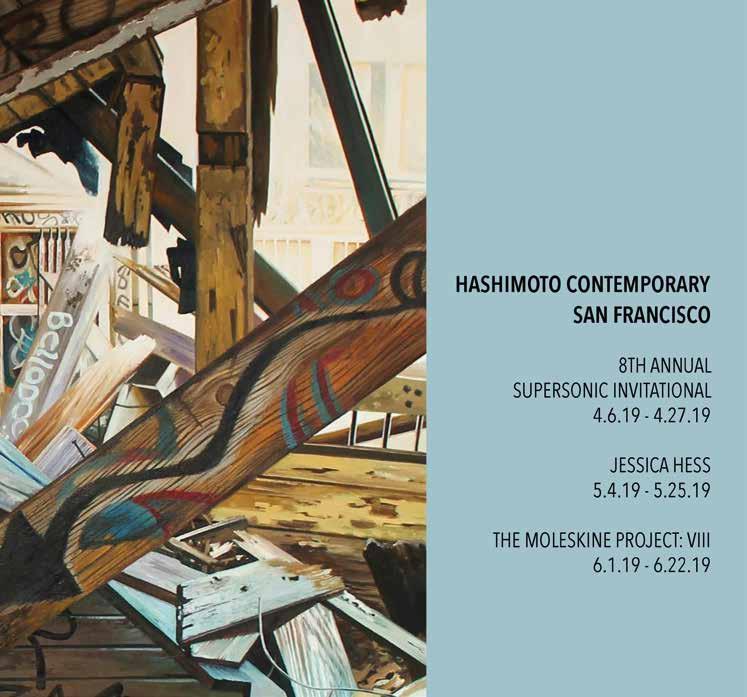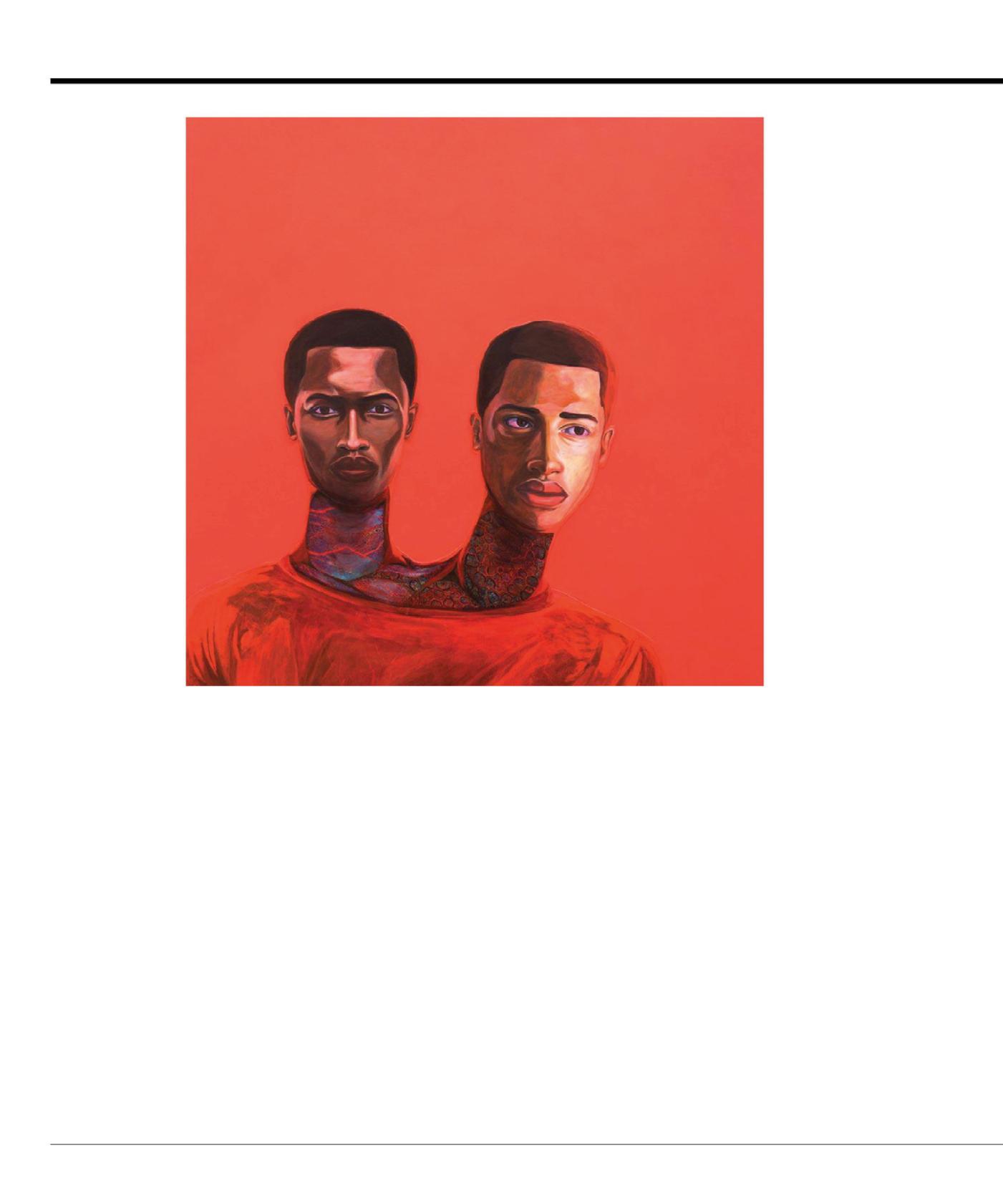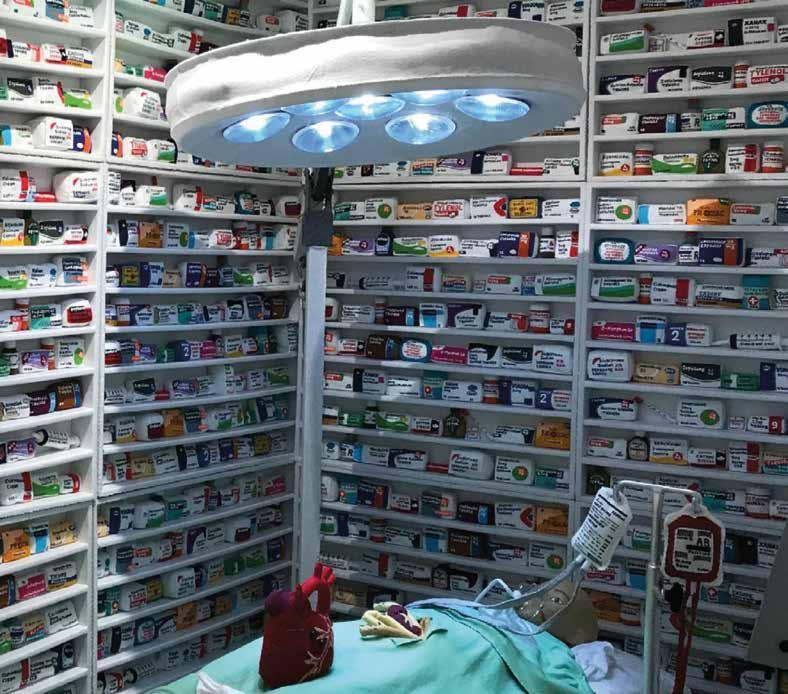
3 minute read
23
San Francisco-based artist Jessica Hess is a hyperre- alistic landscape painter. Her depictions of the ur- ban environment both cel- ebrate and validate the art of graffiti through a fine art lens of oil paintings on canvas and gouache on paper.
A graduate of RISD (Rho- de Island School of De- sign), Hess is a recipient of the Trent Burleson Paint- ing Prize, the Faber Birren National Color Award and the Stamford Art Associa- tion Award for Excellence. Hess has been exhibiting nationally since 2002 and has shown at Subliminal Projects (LA), Think- space (LA), Yves Laroche (Montreal), Ferrin Gallery (MA) and Geoffrey Young Gallery (MA).
Advertisement


20 It was lining up, logging in something one after the other. The I had to number of notable group grapple with shows includes exhibitions and do the at Almine Rech Gallery in work for. It’s London, the August Wilnot gonna son Center in Pittsburgh easily give and Night Gallery in L.A., it to you. I as well as his sold-out solo find it a very show with Half Gallery in energized NYC. The Florida-born place to be artist was recently in in as a makMiami to see his work, er. A place curated by artist Nathanthat is really iel Mary Quinn, included liberating, it with Half Gallery’s exhibit gives me acat NADA, David Castillo’s cess to think booth at Art Basel, as well about my a Rubell Family Collecagency as an tion exhibition of newly artist, about acquired work. To put this conceptual into context, this is just the ideas, differbeginning. ent avenues of making which I find so, so important. V a u g h n Spann

The Rising Star: Vaughn Spann
How does something like that reflect on your actual work practice? Give me an example of How do you feel about ing the work to become you tying up those things accidents in your proitself. While I have ideas cess? of where to move with my So, I grew up in my grandparent’s work, I also want to be home. My parents were around, Accidents are actually reopen and take whatever but they were out working a lot. ally important. For examcomes, and accidents can They had very, what you would call, ple, my abstraction works be one of the most fruitful stereotypical social norms. One of the are all sewn, and I like to places. materials that come in my paintings work on a big scale, ’cause is terry cloth. On Sundays, in my I’m a tall guy and I like to grandparent’s home, my grandmother work in that way. So when and I would fold towels. It was a way you scale up painting and of learning responsibility, but also try to sew it on a sewing to bond with family. When it comes machine, it’s a mess! You to painting, everything needs to just have to be aware that be tactile, so I have a very physical you will make mistakes approach, amd when I do make figuand these accidents could rative work, I have the desire to speak be prone to the work, and within these beautiful traditions that I you have to embrace them saw and still admire. as the part of the work in a very beautiful way. So I’m interested in allow

Lucy Sparrow (born July 1986) [1] is a contemporary artist originating from Bath, England. She works at the intersection of contemporary art and craft setting the agenda for textiles within the urban art scene. She works mainly with felt and wool, creating oversized soft versions of existing objects.[2] Her work often features the SSRI prescrip- tion drug Prozac.[3]
Sparrow has been involved in a number of notable group shows in the UK. She was a contributor to the Victoria and Albert Mu- seum 2013 travelling street art collection alongside Banksy, Blek le Rat, Jamie Hewlett, Pure Evil, D*Face and urban illustrator Oh Jiwon.[4] Her first solo show at Hoxton Gallery was Imitation, which recreated famous artworks out of felt, including a shark in a tank by Damien Hirst.
Lucy 23 Sparrow
In 2014, Sparrow created a Kickstarter campaign to fund her first major exhibition.[6] The Cornershop was a soft sculpture recreation of a British newsagent’s installed in a derelict cornershop in East London. According to news sources, it took Sparrow and her assistant seven months and 300 sq metres of felt to create the 31,000 items on display.











